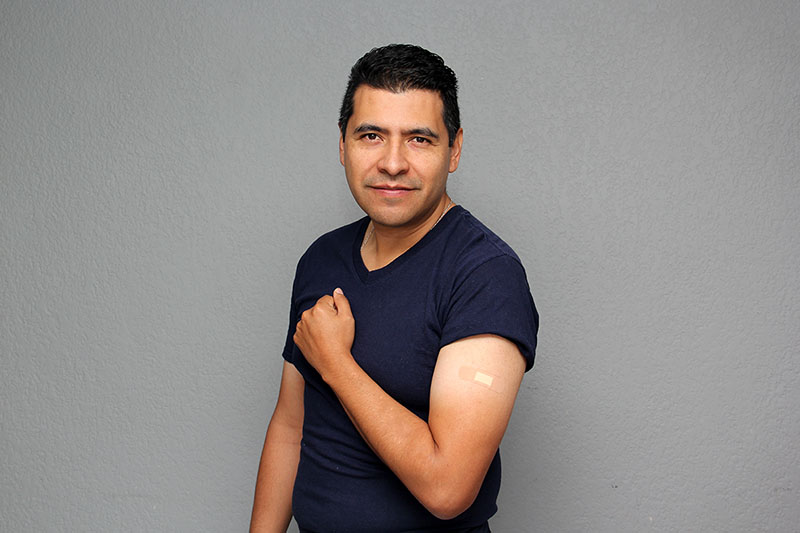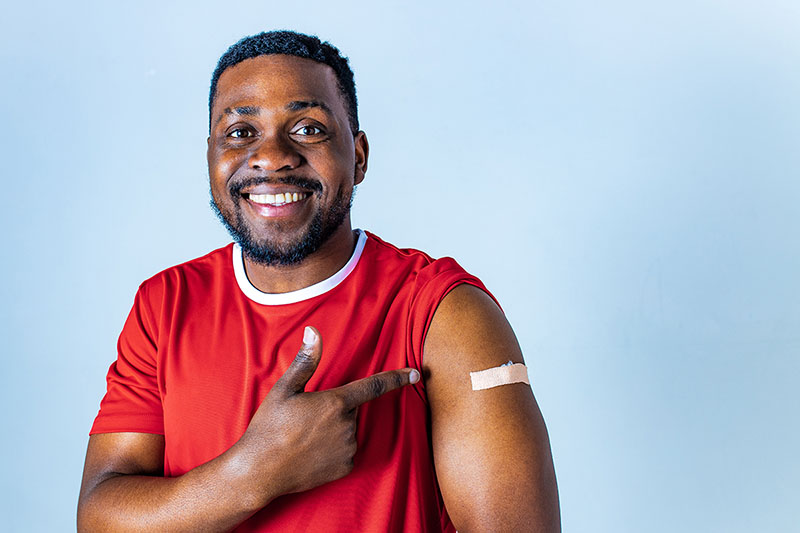5 myths about vaccines that just are not true
Vaccines help protect both children and adults from serious illnesses

Vaccines and immunizations help protect both children and adults from serious illnesses. They are readily available to anyone, and in many cases, they are covered 100% by insurance.
Unfortunately, the internet is full of myths about shots and vaccines. From online forums to comments on social media sites, the spread of false information isn’t slowing down.
Here are a few myths floating around that just aren’t true.
Myth 1: Vaccines are unsafe.
One main concern people often have about vaccines is their safety. However, before vaccines can be approved, they go through several clinical trial phases. According to the CDC, vaccines first go through testing in a lab. Sometimes, small animals like mice are injected to see if an immune response develops from the vaccine.
Once the FDA clears the vaccine in this first phase, clinical trials in humans can begin. The people involved in these trials are volunteers.
The human part of the trials consists of three phases with the goals of identifying benefits, side effects (if any), and determining if there is an immune response.
Once the phases of a clinical trial are complete and a vaccine receives approval, researchers continue to monitor it for any uncommon side effects. Experts note that the benefits of vaccines are much greater than the extremely low risk of side effects.
Myth 2: There is evidence that vaccines can cause autism or sudden infant death syndrome.
Extensive research has discredited the idea that vaccines cause autism or sudden infant death syndrome. Many people who believe vaccines cause autism used a discredited article from a 1998 journal. The article has since been retracted.
Many scientists have conducted studies looking to find a link between childhood vaccines and their ingredients to autism spectrum disorder. To date, nothing has been found.
Sudden infant death syndrome studies also have the same outcome. Some people believe the disease and vaccines are related, but there is no support for that claim. In fact, the number of SIDS cases have gone down recently while childhood vaccine rates are going up.
Myth 3: Vaccines cause infection.
Vaccines do not give you the illness they are designed to prevent. Some adults and children may experience minor side effects after getting vaccinated. These can include a low-grade fever, body aches, or redness at the injection site. If you experience a mild side effect, they tend to go away a few days after you get the vaccine. Keep in mind that vaccines contain either:
- Inactivated (dead) viruses
- Small components of the virus
- Weakened versions of live viruses
None of these can cause the condition, and they only help your body build immunity without the risk of infection.
Myth 4: Herd immunity is enough protection.
Herd immunity is the idea that diseases can’t spread as easily or quickly when a larger part of a population is immune. People can become immune by either contracting the disease and building up antibodies, or by getting vaccinated against it and building antibodies.
The problem begins when a virus from outside of a community is introduced to a group not immune to it. If too many people rely on herd immunity to avoid disease, the first outbreak can result in a widespread issue.
For example, a family whose children didn't receive vaccines spend a day at a theme park. There are other families from different parts of the country and world who unknowingly bring measles with them. If the original family’s children contract measles and then bring them back to their hometown community, the disease spreads quickly to those who aren’t vaccinated against it. Herd immunity can help slow the spread in a community, but it doesn't necessarily protect all individuals.
When you get vaccinated, you’re helping protect yourself from unexpected outbreaks – as well as protecting those who can’t be vaccinated.
Myth 5: You don’t need vaccines for rare viruses or diseases.
You might think certain diseases are so rare you don’t need to worry about them. However, many of these diseases remain rare because of widespread vaccination efforts.
Just as the example used in the herd immunity section illustrates, all it takes is one outbreak of one rare virus in a group of people not immune to it for the “rare” disease to become common again.
When vaccine rates drop, diseases that were once under control can spread quickly.
Protect yourself and others.
Vaccines are the best way to protect yourself and your loved ones from serious, preventable diseases. Visit your local clinic or pharmacy to get vaccinated and protect your health and your community.



